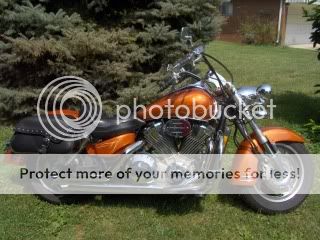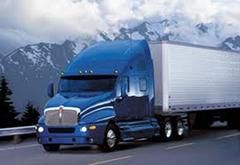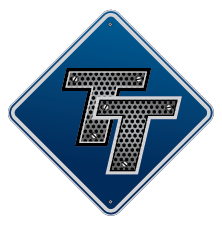Going Downhill In Rain
Topic 5870 | Page 1

Using the right gear is probably the best thing. Lowering your safe speed is a good idea to. I'll be honest though, I've used the engine break in rain before during some hill decent and haven't had a Problem. Not that this is recommended but it's worked for me.

Pretty much the same way you do using the Jake Brake, but in a lower gear.
Ok....good question. Here's the thing with Jake Brakes - they only apply stopping power to the tractor drive tires. They do not apply any stopping power to the trailer itself. That means when you're using the Jake Brakes alone the tractor is trying to hold the trailer back by itself. This is normally no problem on dry pavement but can cause a tractor jackknife on slick pavement.
So the first question - is wet pavement slick? Yes to some degree but that depends upon the surface and how long it has been raining. Smooth asphalt is obviously more slick than rougher asphalt so a well-worn road (worn smooth) will be a little more slick than freshly paved. New concrete pavement usually has grooves put into it which will help prevent hydroplaning so fresh concrete also has better traction than worn concrete. Just something to be aware of.
As far as how long it's been raining - pavement is the most slick when it first starts raining because any grease or oil sitting on the roadway now has a layer of water on top of it. Very, very slick. Once it has been raining for a while under heavy traffic some of that washes away and it's not quite as slick as it was.
Going in a straight line is much safer when using the Jake brakes than going around a bend. When you're going around a bend using only the Jake brakes you're greatly increasing the chances of a tractor jackknife.
So the #1 safety concern is that Jake Brakes are only using the tractor for stopping power. The remedy? Using the foot brake also. You see, when you use the foot brake the system is designed to apply stopping power to the trailer just a little bit sooner than to the tractor and with just a little bit more force. That way you begin slowing the trailer down a bit first before adding the tractor brakes to put braking power to all 5 axles. That's much safer than only using the tractor brakes.
Finally, the Jake brakes apply more power as the engine rpm increases. In other words, you're getting more stopping force at 1800 rpms with Jake Brakes than you would at 1400 rpms.
So what should you do using Jake Brakes in the rain? Let's give an example.....I'll make up some numbers for demonstration purposes....
Say I can go down a particular hill on dry pavement in 7th gear at 1700 rpm's and 35 mph without touching the foot brake. On that same hill in the rain I might go down in 7th gear at 1400 rpm's and 30 mph using slight constant pressure on the brake pedal. If I'm really concerned about it being too slick I might drop down to 6th gear at 1400 rpms and 25 mph with constant slight pressure on the brake pedal.
So the slicker the roads the more you should decrease your road speed, decrease your engine rpm's, and increase the amount of pressure you're putting on the brake pedal. To sum it up with example numbers:
Dry pavement - 35 mph, 7th gear, 1700 rpm's, little or no brake pedal
Slightly slick pavement, very gentle curves - 30 mph, 7th gear, 1400 rpm's, light steady pressure on brake pedal
Slightly more slick pavement or tighter curves - 25 mph, 6th gear, 1400 rpm's, light steady pressure on brake pedal
If the pavement is really slick, like on snow-covered roads, you should use little or no Jake brake whatsoever. Slow your speed down more and try to rely on your brake pedal as much as possible.
So in the end what you're trying to do is determine what percentage of the braking power should come from the Jakes versus the foot brake. The more slick the surface the more foot brake you want to use. The less slick the pavement the more Jake Brake you want to use. You can reduce the amount of braking force the Jake Brake is applying by lowering the engine rpm's.
Now there are multi-stage Jake Brakes on some trucks where you can reduce the number of cylinders the Jake Brakes are affecting. I've found that this isn't all that useful, unless they've made changes to it in the past few years . Anything below full braking force doesn't do a whole lot except make noise. Once in a while I'd experiment with the multi-stage Jakes but in the end I preferred to use engine RPM to control the braking force they're applying.
OWI:
Operating While Intoxicated

Thanks Brett for that explination. I will have to read a few more times to fully understand all of it but right now i need to pick up my brain off the floor
Thanks Brett for that explanation. I will have to read a few more times to fully understand all of it but right now i need to pick up my brain off the floor
No problem. It will all come with time.

The international, mercedes, detroit diesel engines I always left the engine brake on high. The volvo d13 seemed a little strong er, if I remember right. Now I have a Cummins 2010 ISX, and the engine brake on this thing is AWESOME! I use the medium and low on this one a lot, because even HEAVY the high setting will slow it down going downhill.
New Reply:
New! Check out our help videos for a better understanding of our forum features

















Preview:








 TT On Facebook
TT On Facebook
If your driving downhill in the rain and your jake break is off how do you get down the hill safely. I'll hang up and listen to your response.